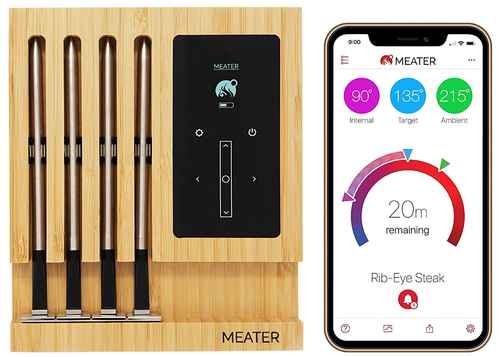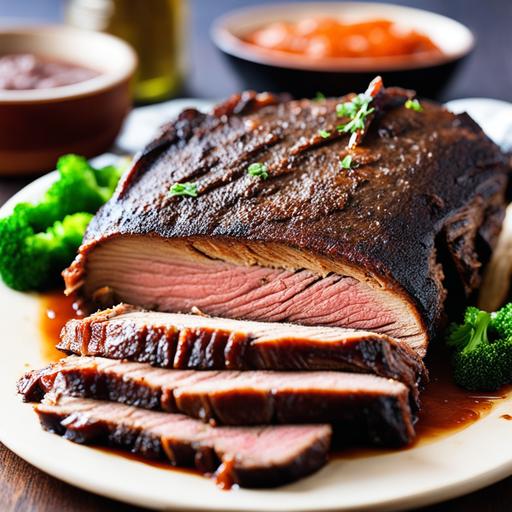
Reheat Brisket In Oven : Step-by-Step Instructions
Brisket is a delectable cut of meat that, when cooked properly, yields a rich and flavorful dish. However, reheating brisket can often be a challenging task, as improper methods may leave the meat dry and tough. Among various reheating methods, using the oven is considered one of the best ways to preserve the tenderness and juiciness of the brisket. In this comprehensive guide, we will delve into the detailed process of reheating brisket in the oven, ensuring that you achieve tender, succulent results every time.
Quick Answer: How To Reheat Brisket In Oven
Reheating brisket in the oven is a straightforward process. Firstly, preheat the oven to a low temperature, around 225°F to 250°F, to gently warm the brisket while preventing it from drying out. Wrap the brisket in foil to retain its moisture and heat, then place it in the oven. Use a meat thermometer to monitor the internal temperature and remove the brisket once it reaches the desired heat level. Rest the brisket for a few minutes before unwrapping and slicing to ensure the juices redistribute within the meat, resulting in a moist and tender texture.
When Not To Reheat Brisket In Oven
While reheating brisket in the oven is a preferred method for maintaining its succulence, certain scenarios may call for alternative reheating techniques. Avoid reheating brisket in the oven when time is limited, or when you are aiming for a quick and convenient reheating process. In such cases, using a microwave or a sous vide machine may be more appropriate.
Best Temperature To Reheat Brisket In Oven
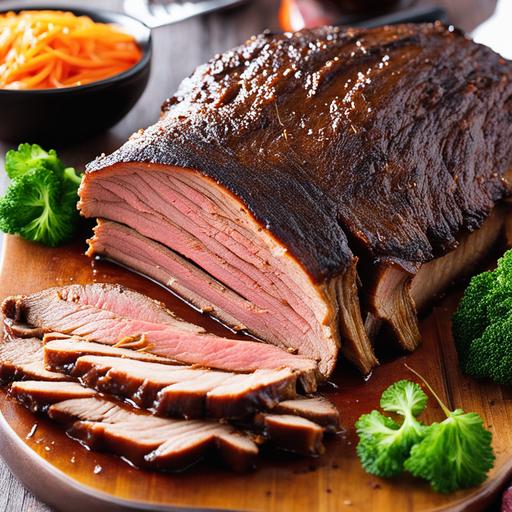
Selecting the right temperature is crucial when reheating brisket in the oven. Low and slow is the key to ensuring that the brisket retains its tenderness and juiciness. When reheating brisket, the ideal temperature range is between 225°F to 250°F. This gentle heat allows the brisket to warm evenly, preserving its texture and preventing the meat from drying out.
Best Cooking Time To Reheat Brisket In Oven
The cooking time for reheating brisket in the oven varies depending on the size and thickness of the meat. As a general guideline, it is recommended to allocate approximately 30 minutes per pound when reheating brisket at a temperature of 225°F to 250°F. However, using a meat thermometer to monitor the internal temperature is the most reliable method for determining when the brisket is thoroughly reheated. Once the brisket reaches an internal temperature of around 165°F, it is ready to be removed from the oven.
Reheating brisket in the oven is a meticulous process that requires attention to detail to ensure that the meat retains its succulence and flavor. By following the recommended temperature and cooking time guidelines, you can consistently achieve tender and juicy reheated brisket. The low and slow method of reheating in the oven, coupled with careful monitoring of the internal temperature, will guarantee a delightful dining experience with each serving of reheated brisket.
How To Reheat Brisket In The Oven
Brisket is a beloved dish that many people enjoy for its tender and juicy meat. Whether you’re hosting a barbecue party or simply looking to enjoy some leftover brisket, reheating it properly is crucial to maintain its delicious flavor and texture. While there are several methods to reheat brisket, using an oven is often considered one of the best ways to achieve the desired results.
Reheating brisket in the oven requires some patience and attention to detail. Follow these step-by-step instructions to achieve the best results:
Step 1: Preheat The Oven
Start by preheating your oven to a temperature of 250°F (120°C). This low and slow approach will help prevent the brisket from drying out and becoming tough.
Step 2: Prepare The Brisket
Before placing the brisket in the oven, make sure it is fully defrosted if it was previously frozen. If you’ve kept your brisket in the refrigerator, allow it to come to room temperature before reheating. This will help ensure even cooking and heating throughout the meat.
Step 3: Wrap The Brisket
To keep the brisket moist and prevent it from losing its natural juices, tightly wrap it in aluminum foil. This will help retain heat and lock in moisture during the reheating process.
Step 4: Place The Brisket In The Oven
Carefully place the wrapped brisket in a baking dish or on a baking sheet. Ensure that the foil is securely sealed to prevent any moisture from escaping.
Step 5: Reheat Brisket
Once the oven has reached the desired temperature, put the baking dish containing the brisket on the middle rack. Allow the brisket to reheat for approximately 30 minutes per pound of meat. This rule of thumb ensures that the brisket heats evenly without overcooking or drying out.
Step 6: Check The Internal Temperature
To ensure that the brisket is thoroughly heated, check its internal temperature using a meat thermometer. The ideal temperature for reheated brisket is around 165°F (75°C). Insert the thermometer into the thickest part of the meat, making sure not to touch any bones or the bottom of the baking dish.
Step 7: Rest And Serve
Once the brisket has reached the desired internal temperature, remove it from the oven and let it rest for a few minutes. This resting period allows the juices to redistribute throughout the meat and ensures maximum tenderness. After resting, carefully unwrap the foil, slice the brisket against the grain, and serve it while it’s still warm.
Should I Reheat Brisket In The Oven?

If you want to enjoy the flavors and textures reminiscent of freshly cooked brisket, reheating it in the oven is a fantastic option. While other methods like microwaving or pan-frying may be quicker, they often result in dry and less flavorful meat. Reheating brisket in the oven allows for gentle and even warming, preserving the tenderness and moisture of the meat. Here are some reasons why reheating brisket in the oven is a preferred choice:
1. Retains Moisture
Brisket is famous for its rich and juicy texture, and reheating it in the oven helps to keep it that way. The low heat and enclosed environment created by the foil wrapping prevent moisture from evaporating, leading to a moist and succulent end product.
2. Preserves Flavor
The slow and controlled reheating process in the oven ensures that the flavors of the brisket are not compromised. Unlike other methods, where heat is applied rapidly and unevenly, the oven gently warms the meat, allowing the flavors to develop and meld together beautifully.
3. Maintains Texture
By reheating brisket in the oven, you can maintain its tender and melt-in-your-mouth texture. The low and slow method prevents the meat fibers from becoming tough and chewy, as can often happen when using high heat or quick reheating methods.
4. Consistent And Even Heating
The oven provides consistent and even heating throughout the entire brisket, ensuring that every slice is brought back to its desired serving temperature. This eliminates the risk of cold spots or unevenly reheated sections, resulting in a more enjoyable eating experience.
5. Versatile For Various Quantities
One of the advantages of reheating brisket in the oven is its versatility for both small and large quantities. Whether you’re reheating a single serving or a whole brisket, the oven allows you to easily accommodate any amount, ensuring the same level of quality throughout.
Best Ways To Reheat Brisket
While reheating brisket in the oven is an excellent method, there are a few additional techniques you can incorporate to further enhance the flavor and texture. Here are some of the best ways to reheat brisket:
1. Use Beef Broth Or Barbecue Sauce
Before wrapping the brisket in foil, consider adding a small amount of beef broth or your favorite barbecue sauce. This will infuse the meat with additional flavors and help prevent it from drying out during the reheating process. Simply pour a few tablespoons of broth or sauce over the brisket and then proceed with wrapping it tightly in foil.
2. Sear The Brisket After Reheating
If you’re looking for an extra layer of texture and flavor, consider giving the reheated brisket a quick sear after it comes out of the oven. Preheat a skillet over medium-high heat, and once hot, sear each side of the brisket for about a minute until a delicious crust forms. This will help to lock in the juices and add a pleasant caramelized flavor to the exterior of the meat.
3. Reheat Sous Vide Style
For those looking for the utmost precision and consistency, reheating brisket using the sous vide method can produce exceptional results. Simply seal the brisket in a vacuum-sealed bag and place it in a sous vide water bath set to 140°F (60°C). Allow the brisket to come to temperature over a couple of hours, and then remove it from the bag and pat it dry. Finish off by searing it in a hot skillet to achieve a beautifully caramelized crust.
4. Make Brisket Sliders Or Tacos
If you’re looking to get creative with your reheated brisket, consider using it to make delicious sliders or tacos. Simply slice the reheated brisket and serve it on small slider buns or tortillas with your favorite condiments and toppings. The combination of the reheated brisket and the fresh additions will result in a mouthwatering and satisfying meal.
What Reheating In The Oven Does To The Brisket
Reheating brisket in the oven not only ensures that it retains its moisture, flavor, and texture, but it also helps to achieve the desired internal temperature for safe consumption. Here is a breakdown of what reheating in the oven does to the brisket:
1. Restores Temperature
When brisket is refrigerated or frozen, it loses its heat and cools down. Reheating it in the oven helps bring the internal temperature of the meat back up to a safe and enjoyable level.
2. Rehydrates The Meat
The foil wrapping method used when reheating in the oven helps to trap moisture within the meat. This moisture rehydrates the brisket, preventing it from drying out and resulting in a tasty and succulent final product.
3. Retains Juices
One of the most important aspects of reheating brisket is keeping the natural juices intact. The oven’s enclosed environment provided by the foil wrapping ensures that the meat’s juices are preserved, resulting in a moist and flavorful bite.
4. Enhances Flavor Development
The slow and gentle reheating process in the oven allows the flavors of the brisket to develop and intensify. This provides a more robust and satisfying taste compared to rapid reheating methods that can often result in flat and lackluster flavors.
5. Ensures Food Safety
Reheating brisket in the oven allows you to reach the recommended internal temperature of 165°F (75°C) for safe consumption. Ensuring that the meat is thoroughly heated is crucial to eliminate any potential foodborne bacteria that may be present.
Reheating brisket in the oven is a fantastic way to bring the flavors and textures back to life without sacrificing quality. By following the step-by-step instructions in this guide, you can enjoy juicy and tender brisket that tastes just as good as when it was freshly cooked. The oven’s low and slow heat ensures that your brisket remains moist and succulent, while also allowing for consistent and even reheating. By implementing additional techniques like using beef broth or searing the meat, you can further enhance the flavor and texture of your reheated brisket. So, the next time you have leftover brisket, remember to reheat it in the oven for a truly satisfying culinary experience.
Can You Restore The Initial Quality Of Brisket?
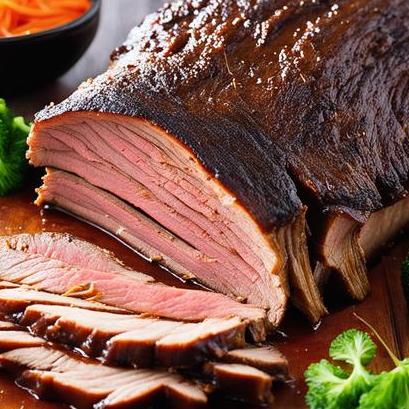
Brisket is a popular and flavorful cut of meat that is often enjoyed as a main dish. Whether you’re a barbecue enthusiast or simply enjoy the smoky and tender texture of brisket, there may come a time when you have leftovers that need to be reheated. While microwaving is a quick and convenient option, it can sometimes result in dry and tough meat. Reheating brisket in the oven, on the other hand, can help restore its initial quality and ensure a delicious meal.
Before diving into the specifics of reheating brisket in the oven, it’s important to address whether or not it’s possible to restore the initial quality of the meat. Brisket, like any other type of meat, tends to lose moisture when heated. This can lead to a dry and tough texture that is far from the tender and succulent experience you initially enjoyed. However, with the right reheating method, it is indeed possible to restore the quality of your leftover brisket to a considerable extent.
Reheating brisket in the oven allows the meat to heat evenly and retain its moisture, resulting in a more flavorful and tender outcome. By following the proper techniques and utilizing the appropriate temperature and timing, you can achieve a satisfactory reheating result that brings your brisket back to life.
Tips For Optimal Reheating Results
To ensure the best possible outcome when reheating brisket in the oven, consider the following tips:
1. Preheat The Oven
Before placing your brisket in the oven, it’s crucial to preheat it to the appropriate temperature. This helps to ensure even heating and prevents the meat from drying out during the process. Set your oven to a temperature of 250°F (120°C) to 300°F (150°C) for optimal results.
2. Slice The Brisket
To facilitate even reheating, it is recommended to slice the brisket into manageable portions. This allows the heat to reach the inner parts of the meat more effectively. Aim for slices that are approximately half an inch thick.
3. Moisture Is Essential
One common issue when reheating brisket is the loss of moisture. To combat this problem, creating a moist environment is crucial. You can achieve this by placing the brisket slices in a baking dish or oven-safe pan with a small amount of liquid. This can be broth, water, or even the reserved juices from the original cooking process. Covering the dish with aluminum foil helps to trap steam and retain moisture.
4. Take It Slow
To prevent the brisket from drying out or becoming tough, it’s important to reheat it slowly. This ensures that the heat has ample time to penetrate the meat and warm it thoroughly without sacrificing its tenderness. Plan for a reheating time of approximately 25 to 30 minutes for every pound of brisket.
5. Baste With The Pan Juices
After the initial reheating time has passed, you can enhance the flavor and moisture of the brisket by basting it with the pan juices. This helps to create a delicious glaze on the meat and prevents it from drying out further. You can use a basting brush or spoon to coat the brisket slices with the pan juices before returning them to the oven for a final heating.
Reheating Brisket More Than Once
If you find yourself with leftover brisket that has already been reheated once, you may wonder if it’s possible to reheat it again without compromising the quality of the meat. The good news is that you can indeed reheat brisket more than once, as long as it has been handled and stored properly.
When reheating brisket that has already been reheated once, you should follow all the tips mentioned above. However, keep in mind that the meat is likely to be drier and less tender than the initial serving. To combat this, consider adding a bit more liquid to the baking dish or pan to help infuse the meat with moisture as it reheats.
It’s important to note that each time you reheat the brisket, it may lose some quality and freshness. Therefore, it’s best to plan ahead and portion your brisket into serving sizes that you will consume in one sitting, or at most, reheat only once.
Safety Measures When Reheating Brisket
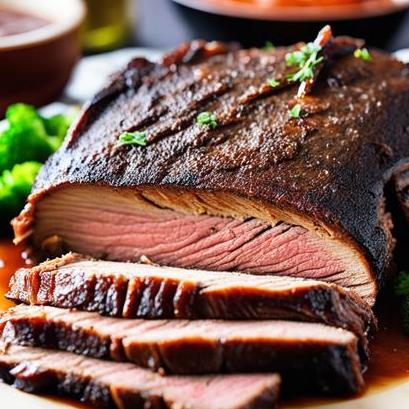
Proper food handling and safety measures are essential when reheating any type of leftover meat, including brisket. Here are some important safety precautions to keep in mind:
1. Storage And Refrigeration
Ensure that your leftover brisket is promptly and properly stored in the refrigerator after the initial cooking. Ideally, it should be stored within two hours of being served. Place the brisket in airtight containers or wrap it tightly with plastic wrap, aluminum foil, or freezer paper. This helps to prevent bacterial growth and maintain the quality of the meat.
2. Thawing Frozen Brisket
If you’re reheating frozen brisket, it’s essential to thaw it safely before reheating. The best method is to transfer the frozen brisket to the refrigerator and allow it to thaw overnight. If you need to thaw it more quickly, you can use the defrost function on your microwave. However, it’s important to begin reheating the brisket immediately after thawing to minimize the risk of bacterial growth.
3. Reheating Temperature
When reheating brisket in the oven, it’s vital to ensure that it reaches a safe internal temperature of at least 165°F (74°C). This helps to destroy any bacteria that may have grown during storage and reduce the risk of foodborne illnesses. Use a meat thermometer to accurately measure the internal temperature of the thickest part of the meat.
4. Avoid Cross-contamination
To prevent cross-contamination, always use separate utensils and cutting boards for raw and cooked meats. Clean and sanitize any surfaces, utensils, or dishes that come into contact with raw brisket before using them again.
Reheating brisket in the oven is a fantastic way to restore its initial quality and enjoy a delicious meal. By following the tips provided in this article and taking the necessary safety measures, you can ensure that your reheated brisket remains moist, tender, and flavorful. Whether you’re hosting a casual dinner party or simply craving a satisfying meal, reheating brisket in the oven is an excellent way to make the most out of your leftovers.
Adjusting Reheating Times
Reheating brisket in an oven is a traditional method that many people prefer. The oven method helps the meat retain its moisture and tenderness while also ensuring it is fully heated through. But once cooked, brisket can become dry and tough if it’s not reheated correctly.
When reheating brisket, it’s essential to keep its natural flavor and juiciness while ensuring it’s heated through thoroughly. While there are many different ways to reheat brisket, using the oven is perhaps the most reliable and straightforward method.
The time and temperature it takes to reheat brisket in an oven depend on how much brisket you have and how thickly it’s sliced. It also depends on how you prefer your brisket to be cooked. Whether you want a crisp exterior or just a warm interior, it’s essential to adjust the reheating time accordingly.
As a general rule, you should reheat brisket at a temperature of 250-300°F. The amount of time required can vary depending on the size and thickness of your brisket. A 1 lb. brisket may only take 15-20 minutes, while a 5 lb. brisket can take up to an hour.
It’s essential to keep an eye on your brisket while it’s reheating. You may want to check on it every 10-15 minutes to ensure that it’s not becoming dry or tough.
Avoiding Common Mistakes In Oven Reheating
There are a few common mistakes people often make when reheating brisket in an oven. Below are some common mistakes and how to avoid them:
- Overcooking: Overcooking your brisket can make it dry and tough. Always check the temperature of the brisket throughout the reheating process.
- Not using foil or wrapping: Wrapping your brisket in foil helps it retain moisture and prevents it from drying out during reheating.
- Using a high temperature: Using a high temperature to reheat brisket can cause it to dry out rapidly. Instead, use a lower temperature and cook the brisket for a bit longer.
- Not letting it rest: Letting the brisket rest after reheating allows the juices to redistribute, making the meat juicier and more flavorful.
Tips And Tricks To Reheating Brisket In Oven
Reheating brisket isn’t just a matter of putting it in the oven and waiting for it to be warmed up. There are some tips and tricks you can use to achieve the best results when reheating brisket in an oven:
- Wrap tightly with foil: Wrapping the brisket tightly in foil helps to retain its moisture and flavor. This will also keep it from drying out during the reheating process.
- Basting or Adding Liquid: You can also add some liquid or sauce to the brisket before reheating it to help retain its moisture. You can baste with extra sauce during the reheating process to give it a little extra flavor.
- Use a meat thermometer: A meat thermometer can help you keep track of the brisket’s temperature as you reheat it. It’s essential to ensure that the brisket is heated through, but not overcooked.
- Rest in Warm Area: After reheating the brisket, let it rest for a few minutes in a warm spot. This helps the juices redistribute before you slice it.
- Slice brisket after reheating: Slicing the brisket after reheating it prevents it from drying out further. This also makes it easier to serve and eat.
Conclusion
Reheating brisket in an oven can be effectively achieved following a few simple steps and best practices. Wrapping the brisket tightly in foil, adding liquid or sauce, and using a meat thermometer will aid in achieving perfectly reheated brisket. You also want to avoid common mistakes such as overcooking, not wrapping, and not letting the brisket rest adequately.
By following the tips and tricks discussed in this article, you can enjoy tender, juicy, and flavorful brisket the second time around!
FAQS
How Long Should I Reheat Brisket In The Oven?
The general rule for reheating brisket in the oven is to cook it for 30 minutes per pound at a temperature of 350 degrees Fahrenheit. However, this may vary depending on the thickness and size of your brisket, so it’s important to use a meat thermometer to check the internal temperature.
What Temperature Should The Oven Be Set To When Reheating Brisket?
The optimal temperature for reheating brisket in the oven is 350 degrees Fahrenheit. This allows the brisket to cook evenly and reach a safe internal temperature without drying out the meat.
Can I Reheat Brisket In The Oven If It’s Been Frozen?
Yes, you can reheat frozen brisket in the oven. However, it’s important to thaw the brisket first in the refrigerator or using the defrost setting on your microwave. Once thawed, you can follow the same reheating instructions as you would for fresh brisket.
How Can I Prevent My Brisket From Drying Out When Reheating It In The Oven?
To prevent your brisket from drying out, you can wrap it tightly in aluminum foil before placing it in the oven. This will help to trap the moisture and keep the brisket tender and juicy. You can also add a splash of beef broth or sauce to the foil packet for added moisture.
Can I Reheat Brisket In The Oven If It’s Already Been Sliced?
Yes, you can reheat sliced brisket in the oven. However, it’s important to keep the slices in an airtight container or wrap them tightly in foil to prevent them from drying out. You can then place them on a baking sheet and follow the same reheating instructions as you would for a whole brisket.


